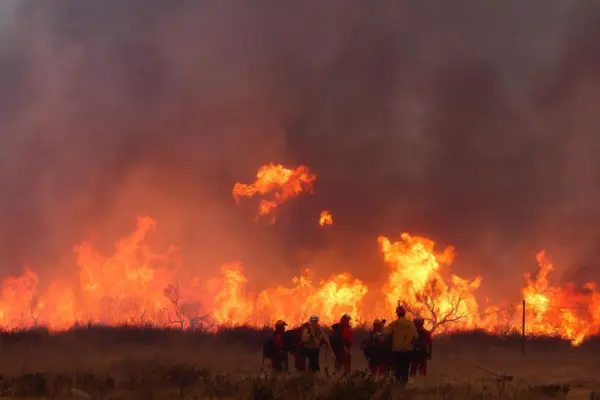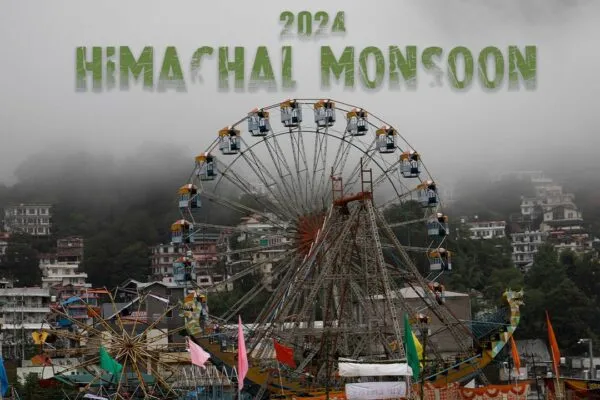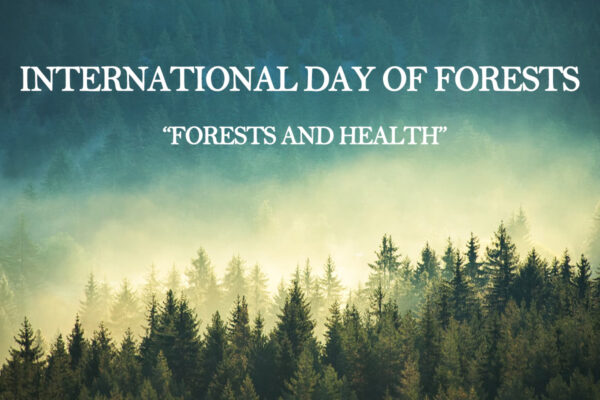The Amazon Rainforest has Lost Forest Cover the Size of Israel in 2020
The Amazon rainforest has had a pretty difficult couple of years with all the wildfires and illegal logging. In 2019, the region lost nearly 1.7 million hectares of forest cover to the wildfires, which is a conservative estimate but the actual area of forest loss may be larger still. While that year was a horrible one for the environment, 2020 was even worse. According to a new satellite data analysis, the daunting Amazon forest cover loss in 2020 is the size of Israel.
The authors of the new study say that the 2 million hectares of primary forest cover were lost in 2020, which certainly is more than the loss in 2019. The analysis was released by researchers Matt Finer and Sidney Novoa at the Monitoring of the Andean Amazon Project (MAAP), an initiative of a US-based Amazon Conservation and Peru-based Conservación Amazónica along with partners ACEAA in Bolivia and EcoCiencia in Ecuador.
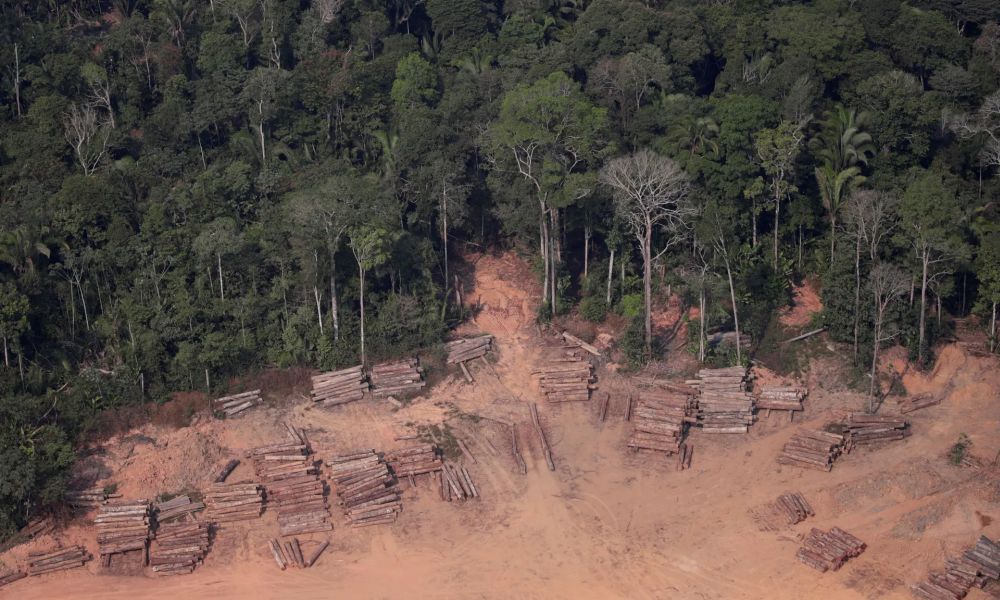
The daunting Amazon forest cover loss in 2020 is the size of Israel | Image: Ueslei Marcelino/Reuters
The MAAP used the data from the Global Land Analysis and Discovery (GLAD) lab at the University of Maryland (UMD), which gathers primary satellite data on tree cover fluctuations in the tropical parts of the world in near-real-time.
While GLAD data are subject to change after UMD processes the dataset more comprehensively later this year, MAAP’s estimate for Amazon primary forest loss for 2019 ultimately came out low. Conclusively, the Amazon may have lost considerably over 2 million hectares of primary forest last year, making 2020 a banner year for deforestation.
Finer said,
Across the Amazon, even though 2019 made more graphic headlines with the fires, our early estimates indicate that 2020 was actually worse in terms of both deforestation and fires. Deforestation often gets very impersonal, stripped down to just numbers. Here we want to highlight where this deforestation is actually happening and what it really looks like.
Brazil lost the most primary forest of any Amazon country, with most of this loss concentrated in the southern Brazilian Amazon along the agro-industrial corridor which has become known as the “Arc of Deforestation” due to years of wide-ranging clearing for cattle pasture, soy fields, and timber.
Also Read: Illegal deforestation Escalates in Brazil’s Rainforests Amid Pandemic
The study has revealed that many areas were initially deforested in the first half of 2020 and burned down in July and August, following the pattern of “slash and burn” cultivation which is common in the tropics. The fires were not particular to the Brazilian Amazon region, with disastrous fires erupting in other parts of the country as well.
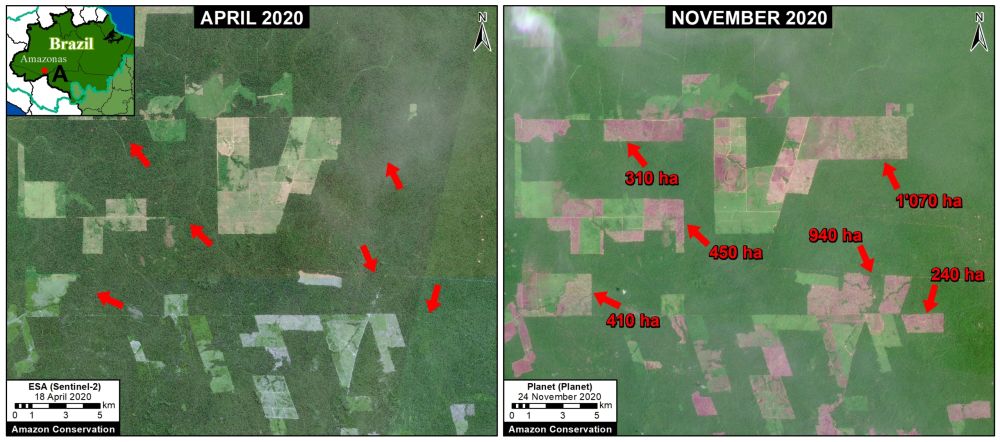
Deforestation in the Brazilian Amazon | Image: MAAP
For two consecutive years, Bolivia was devastated by heavy wildfires. MAAP evaluates the struggling Chiquitano dry forests in the eastern part of the country that suffered the loss of another 260,000 hectares of primary forest cover. Once thought to be the planet’s “best-preserved tropical dry forest,” the Chiquitano is home to a multitude of wildlife, including the most mammal species in the ecoregion – 26% of which are threatened with extinction. In Peru, deforestation remains in the country’s midsection.
Some scientists warn that the Amazon ecosystem could soon reach a dangerous tipping point in which it no longer generates enough rainfall to support its ecosystems, eventually converting into dry savanna.
The loss of forest cover in the Amazon rainforest could be catastrophic for the planet. Therefore, it has become crucial for humankind to prevent the loss of forest cover in the region. Worryingly, the rainforest is not the only area threatened by logging and wildfires, for instance, Australian bushfires have ravaged the continent island’s biodiversity. In these crucial times for the environment, humankind ought to be cautious and compassionate toward it to prevent the environmental apocalypse.
Via: Reuters
